DENMARK
History

History

Cities in DENMARK
| Aarhus | Copenhagen |
History
Stone Age
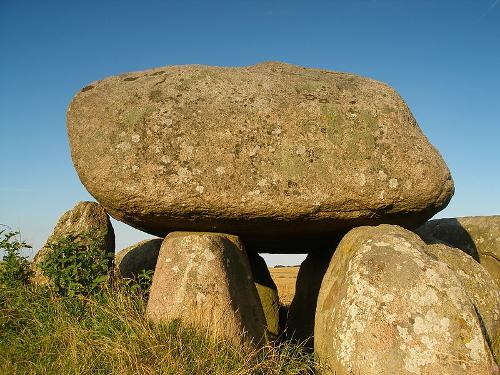 Dolmen near Sømarke on the island of Møn in DenmarkPhoto: Svobodat CC 3.0 Unported no changes made
Dolmen near Sømarke on the island of Møn in DenmarkPhoto: Svobodat CC 3.0 Unported no changes made
Evidence suggests that the first humans roamed around Danish territory as early as 12,000 years ago. She mainly lived off reindeer hunting. After the climate got a bit warmer, the reindeer moved further north. The hunters, in turn, headed for the coast and lived off fishing. Around 4000 BC. the Danes grew their own food and kept some livestock. From around 2000 BC. date the dolmens, burial chambers consisting of large boulders that were covered with a flat stone. The glaciers of the Ice Age had left those large boulders. Denmark is dotted with burial mounds, large stones, passage graves and megalithic tombs. The tombs were sometimes more than 100 meters long.
Bronze Age
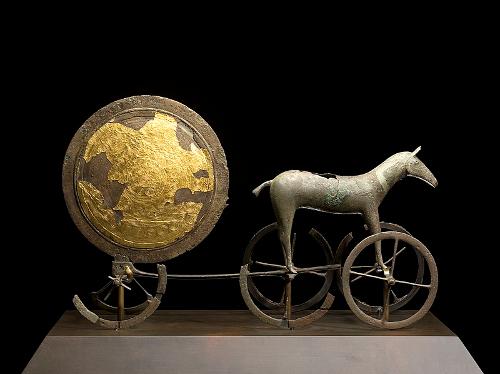 The Trundholm sun chariot, DenmarkPhoto: Nationalmuseet CC 3.0 Unported no changes made
The Trundholm sun chariot, DenmarkPhoto: Nationalmuseet CC 3.0 Unported no changes made
Bronze was added around 1800 BC. introduced in Denmark and the people soon showed themselves to be masters in making utensils and art objects. In order to obtain the precious bronze, there were already contacts with peoples in the south of Europe around that time. Important archaeological finds from these earliest times are the Gundestrup shell, the Trundholm solar chariot and the man of Tollund bog body.
Viking Age
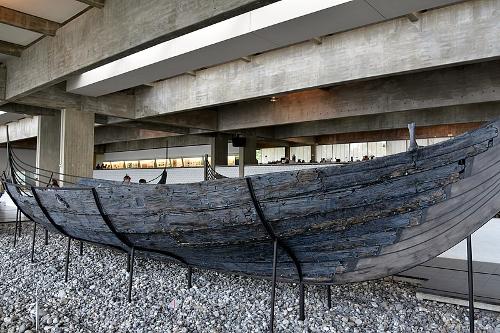 Viking Ship DenmarkPhoto: Richard Mortel CC 2.0 Generic no chamges made
Viking Ship DenmarkPhoto: Richard Mortel CC 2.0 Generic no chamges made
Around the beginning of our era, for the first time in the annals and accounts of the Romans, mention is made of the North Germanic tribes. These North Germanic tribes slowly moved south towards Central Europe. These small groups were gradually incorporated into larger tribal groups, creating principalities and kingdoms. From the first five to six centuries AD. little is known. It was not until the end of the 8th century that the Danes entered European history. On June 8, 793, the monastery island of Lindisfarne in Great Britain was attacked and looted by a suspected Danish fleet. Within a few decades, all of Western Europe suffered from the raids of the Normans or Vikings, as they were called. It is still unclear where they came from exactly, Norway, Sweden or Denmark. Yet the Normans did not only sow death and destruction in Europe. They also founded cities, hired out as soldiers, traded, and explored. One of the reasons for this expansion drive was the fact that Scandinavia back then was still an unexplored area with few opportunities for agriculture. As a result, overpopulation threatened and many Normans settled in e.g. Normandy in France or the British Isles. Particularly in Northumbria in North East England there were many Danes and they founded Danelagh, an almost independent Danish empire. Sweyn Forkbeard sent ± 1100 ships into the North Sea to conquer Danelagh and eventually all of England. After some skirmishes, this succeeded and in 1013 Sven was proclaimed king of England.
Norway had no leader at the time, and Sven's son, Knud, was crowned king there too, resulting in a great northern empire led by the Danes. However, the empire soon fell apart, because of its size it was not controllable. The appointed viceroys clashed with each other. This eventually led to an English king in England and a Norwegian king in Denmark. Attempts were made to recapture England but after the lost battle of Hastings in 1066 the Viking era came to an end.
Battle for the Baltic
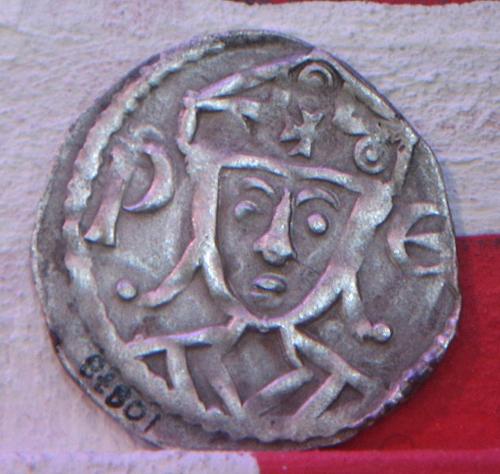 Coin from the time of Valdemar the great of DenmarkPhoto: Hedning CC 3.0 Unported no changes made
Coin from the time of Valdemar the great of DenmarkPhoto: Hedning CC 3.0 Unported no changes made
Denmark at the time was probably a practically fully agrarian society that did not extend only to present-day Danish territory. Parts of Schleswig in Northern Germany and Southern Sweden were also included. Political power lay in Jutland and economic power around a trading post in Schleswig. The population consisted of clans headed by a clan chief. There was no central authority yet. Cross-clan decisions were made during a "Ting", a gathering of "free men". Once a year a "Landsting" was organized which also functioned as a court. Each region had a Landsting and the power of such a Landsting did not extend beyond its own region.
The Danes were now threatened by little German fiefdoms and by the Wends, a Slavic people living on the Baltic Sea. A domestic problem was the enormous surplus of women due to the many dead or emigrated Normans. Polygamy was common and caused complicated succession issues. The king's power was restored under Valdemar the Great. After the death of Valdemar, the bishop of Roskilde, Absalon, took power. He moved the political center of Jutland to Sjælland because the Baltic Sea became more important as a trade route than the North Sea route.
Also under Absalon a fortress was built along that important route, Havn. This village would later become the capital of Denmark, Copenhagen. From that time on, the history of Denmark was dominated by the struggle for supremacy around the Baltic Sea. Valdemar II conquered large tracts of land on Lake Kiel with the permission of the German Emperor. He also tried to conquer Estonia, but this failed.
He was even kidnapped and held for three years. Valdemar II had many (illegitimate) sons which led to a number of inheritance issues that even resulted in deaths. At that time, Schleswig was still the most powerful region and the Count of Schleswig the most powerful man after the king. In 1282 the "Håndfestning" was signed, agreeing to establish a single national parliament. Due to an empty treasury, large parts of Denmark were given up as collateral. Mutual disputes led to a kingless era from 1332 to 1340.
Denmark, Sweden and Norway together
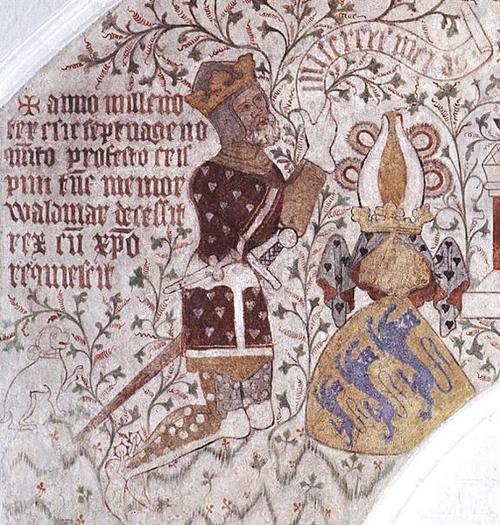 Valdemar IV of DenmarkPhoto: Public domain
Valdemar IV of DenmarkPhoto: Public domain
Valdemar IV was pushed forward by nobles and placed on the throne. However, this Valdemar turned out to be by no means a weak person. He conquered Gotland, which belonged to the Swedish kingdom and was an important Hanseatic city. The Hanseatic League did not accept this and sent a fleet to Denmark, which, however, was defeated near Copenhagen. During these years, Denmark was hit by a plague epidemic that killed one third of the Danish population. Valdemar became an important person in Danish history. He gave the first impetus to the union of Norway, Sweden and Denmark. Norway and Sweden were already united under King Magnus at that time. His son Haakon married Margrethe, daughter of Valdemar.
After Valdemar's death, Margrethe claimed the Danish throne. Because female heirs were not accepted, her five-year-old son Oluf became a prince under the regency of Margrethe. Oluf died at the age of 17 and Margrethe was accepted as monarch over Norway and Denmark. In 1389 the Swedish king was defeated by her at the battle of Falkøbing. It took until 1397 for the unification of the three kingdoms (Union of Kalmar). Margrethe was succeeded by her Slavic great-nephew Erik von Pommeren. In the long run the nobility did not see this as such and they started looking for a successor from the German branch of the family. Christian I was chosen, which in turn led to an alliance with the mighty Holstein. This resulted in a curious situation. As Count of Schleswig, he was loyalty to the King of Denmark, which he himself was, and as Count of Holstein he had to support the German Emperor. Sweden rejoined the Union after his death. Successor Hans suffered a heavy defeat against the Frisians in 1500. The Swedes left the Union again in 1502 due to this defeat. He was succeeded by his son Christian II, the Viceroy of Norway. He led a punitive expedition against Sweden in 1520 and initially captured Stockholm. Swedish farmers led by Gustav Vasa retaliated and Christian was eventually exiled to the Southern Netherlands. It was at this time that Luther's ideas penetrated into Denmark. It appealed to the Danes and it was Christian III who in 1536 installed Evangelical Lutheran doctrine as the state religion.
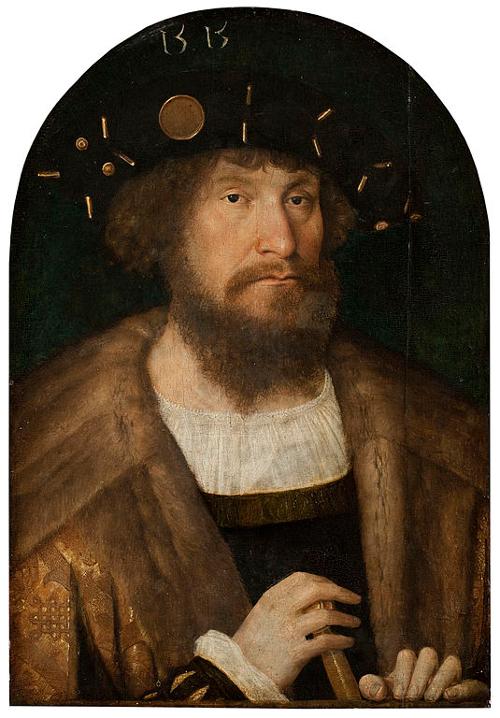 Frederick II of DenmarkPhoto: Public domain
Frederick II of DenmarkPhoto: Public domain
His successor Frederick II came into conflict with the Swedish monarch. This would end in the Seven Years' War (1563-1570), which, however, did not resolve the conflict. The Swedes were too strong on land, the Danes too strong at sea. The constant wars of Spain, Germany, England and France allowed Denmark to develop as a world power at sea. Under Christian IV, Denmark's weakness appeared on land. Many campaigns were lost, and when he died in 1648, he left a devastated and looted Denmark for his successor, Frederick III. Frederik also suffered a serious defeat against the Swedes and Denmark lost almost a third of its territory and sole control of the lucrative Øresund (tolls) at the Peace of Roskilde in 1658. Karl X of Sweden immediately tried to overrun the whole of Denmark, but the Danes were now helped by the Dutch, who had a great interest in ensuring that the Øresund would not be ruled by one power. The Danes and the Dutch succeeded in chasing the Swedes away and Frederik was forced to significantly reduce the tolls and grant the Swedes free passage. Strangely enough, the nobility was blamed for all these humiliations and Frederik saw his opportunity to declare himself sole ruler over Denmark and Norway. At the end of the 17th century, the beginning of the 18th century, Christian V and Frederik IV tried to regain control of the Øresund. Great defeats followed and with the end of the Great Northern War in 1721, it became clear that Denmark would never again rule the Øresund.
Eighteenth century and nineteenth century
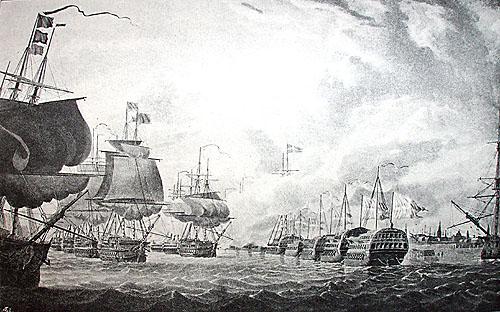 Battle of Copenhagen 1801Photo: Public domain
Battle of Copenhagen 1801Photo: Public domain
The 18th century was also a century with many weak kings and an increasing divide between the nobility and the bourgeoisie, which became increasingly powerful. The rest of Europe had to deal with the consequences of the French Revolution from 1789. In this respect, it initially remained calm in Denmark and Denmark was once again able to profile itself as an important merchant shipping nation. Due to the dangerous situation at sea, the Danes had to enter into alliances with, among others, Russia and some other countries, and were thus involved in the combat actions. Denmark was attacked on its own territory by an English fleet. The Russians then defected to the English side and the Swedes could not help either. This forced the Danes to cooperate with the French emperor Napoleon. The English were of course strongly opposed to this and sent another fleet to Denmark and this time Copenhagen was largely destroyed. Nearly 2000 soldiers and civilians were killed and the Dano-Norwegian fleet was also nearly decimated. The Danes were now forced to enter into an alliance with Napoleon but fought a hopeless battle and eventually lost all their ships! A peace treaty was signed in Kiel in 1814 under which Denmark, as punishment for its support to France, had to dissolve the union with Norway. The Faroe Islands, Iceland and Greenland were assigned to Denmark. Christian VIII inherited completely bankrupt Denmark in 1839.
In the European revolution year 1848, absolute monarchy was abolished under Frederick VII. In 1849 Denmark was given a modern constitution, a national parliament with two chambers and limited suffrage. In the mid-19th century, Denmark went to war with Germany, which made claims to Schleswig. The First Schleswig War (1848-1850) was won by Denmark. It was agreed that Schleswig and Holstein would henceforth be considered independent territories. In 1863, the Danish government decided, without the king's knowledge, to take away Schleswig's autonomy. The Second Schleswig War was a fact and was also lost by the Danes. Denmark was forced to give up Schleswig. This loss had major consequences for Jutland, which lost a lot of good agricultural land. It was forced to cultivate large tracts of barren heathland, to improve education, and a new port city, Esbjerg, was built. In short, Jutland would develop into an economically strong region within a few decades.
1900-1945
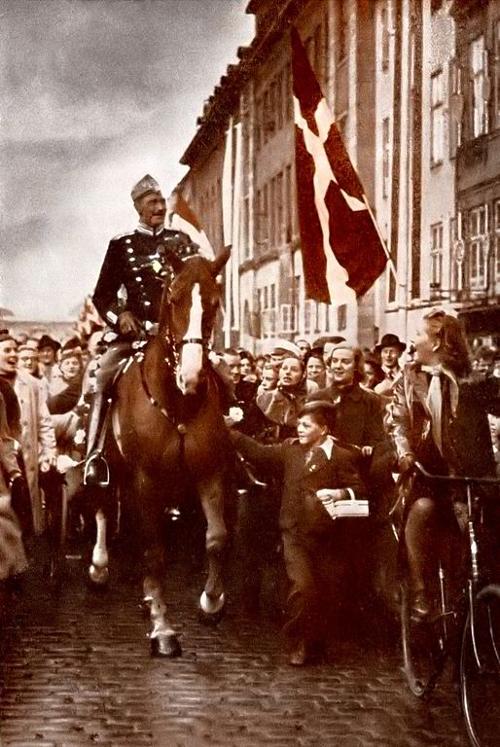 King Christtian X in 1940Photo: Public domain
King Christtian X in 1940Photo: Public domain
It was only after the First World War that the 500-year problem was solved. A popular vote resulted in the predominantly Danish-speaking north of Schleswig joining Denmark, and the more German-speaking people in the south wishing to stay with Germany. During the First World War, only the merchant fleet suffered from the combat actions. About a hundred ships were lost. On the other hand, a lot of money was made on trade during this time.
On April 9, 1940, the Germans invaded Denmark and the country was occupied without significant resistance. Apart from Bornholm, Denmark escaped the violence of war.
After the second World War
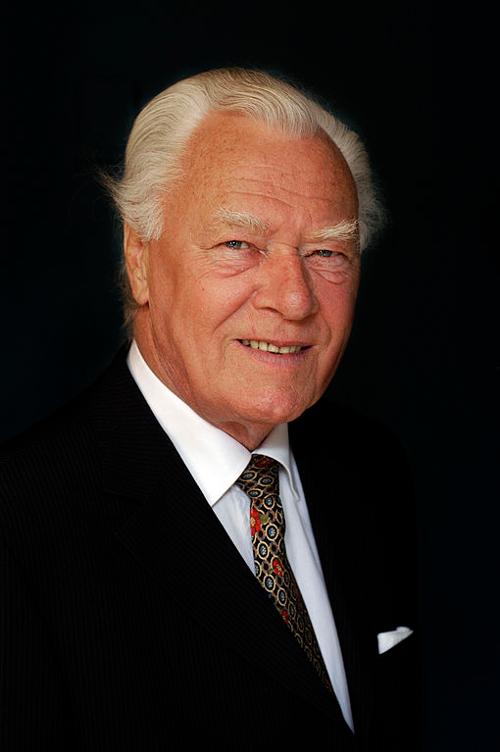 Paul Schluter, DenmarkPhoto: Johannes Jansson/norden.org in the public domain
Paul Schluter, DenmarkPhoto: Johannes Jansson/norden.org in the public domain
Denmark was liberated on May 5, 1945. The war did have indirect consequences for Denmark. For example, Iceland broke away from Denmark in 1944 and unilaterally declared its independence. In 1948 the Faroe Islands took on some form of domestic government. In the early 1950s, the parliament was reorganized in such a way that in 1953 only one chamber remained, the "Landsting".
The economic reconstruction after the war became a success story. Education, science and prosperity in general also reached a high level. In 1973 Denmark became a member of the European Union. In 1982, the Social Democratic government resigned to make way for a center-right coalition led by Poul Schluter of the Conservative People's Party. He would lead the country for the next 12 years. In 1993, the Social Democrats regained power, which they retained until the November 20, 2001 elections, when they were beaten by large numbers by the liberal / conservative opposition.
21th century
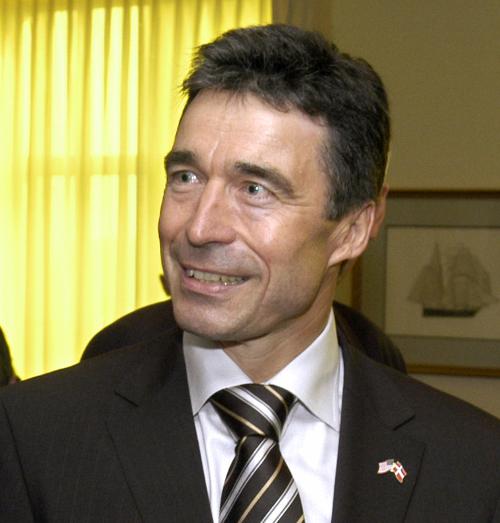 Danish Prime Minister Anders Fogh RasmussenPhoto: Public domain
Danish Prime Minister Anders Fogh RasmussenPhoto: Public domain
On September 27, 2001, the Rasmussen cabinet was installed. The Liberal Party (Venstre) and the Conservative Party were part of the minority cabinet of Anders Fogh Rasmussen (Venstre). The outcome of the February 8, 2005 elections led to a second term in office for Prime Minister Rasmussen, his Liberal Party and the Conservative Party in another minority cabinet. It is the first time in history that a Liberal MP has been given a second mandate.
In 2006 Denmark faces the "Cartoon Crisis" As early as 2005, cartoons depicting the Prophet Mohammed were published in a Danish newspaper. Now there is a lot of commotion in many Muslim countries and there is an unofficial boycott of Danish products.
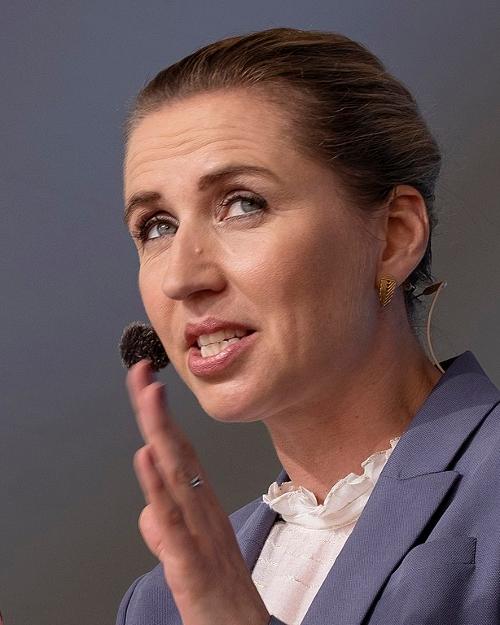 Mette Frederiksen, DenmarkPhoto: News oresund CC 2.0 Generic no changes made
Mette Frederiksen, DenmarkPhoto: News oresund CC 2.0 Generic no changes made
In November 2007, Rasmussen will be given a third term after early elections. In April 2009, Prime Minister Anders Fogh Rasmussen was appointed Secretary General of Nato and succeeded by Minister of Finance Lars Lokke Rasmussen. In December 2009 Copenhagen is the host of the failed (in terms of legal agreements) climate summit of the United Nations. Helle Thorning-Schmidt wins elections with the center left coalition in September 2011, making it Denmark's first female prime minister. Same-sex marriage will become legal in June 2012. In January 2014, the small socialist people's party leaves the governing coalition. In May 2014, the Danish People's Party, the anti-immigration party of Denmark, won 27% of the vote in the European elections. In June 2015, the center-left Helle Thorning-Schmidt coalition falls. Lard Lokke Rasmussen is a right-wing minority government. In January 2016 the government will take anti-immigration measures, valuables or cash must be used to pay for housing. In November 2016, Lard Lokke Rasmussen strengthens the government by forming a coalition with the liberals and conservatives. In June 2017, parliament repealed an old basphemy law prohibiting public insults against religious beliefs. Social Democrat leader Mette Frederiksen led her party back to power in the June 2019 general election, ending four years of centre-right rule. Next elections are to be held in June 2023.
Sources
Bendure, G. / Denmark
Lonely Planet
Denemarken
Lannoo
Dominicus, J. / Denemarken
Gottmer
Europese Unie : vijftien landendocumentaties
Europees Platform voor het Nederlandse Onderwijs
Hoogendoorn, H. / Denemarken
ANWB
Steinmetz, P. / Reishandboek Denemarken
Elmar
CIA - World Factbook
BBC - Country Profiles
Last updated June 2025Copyright: Team The World of Info